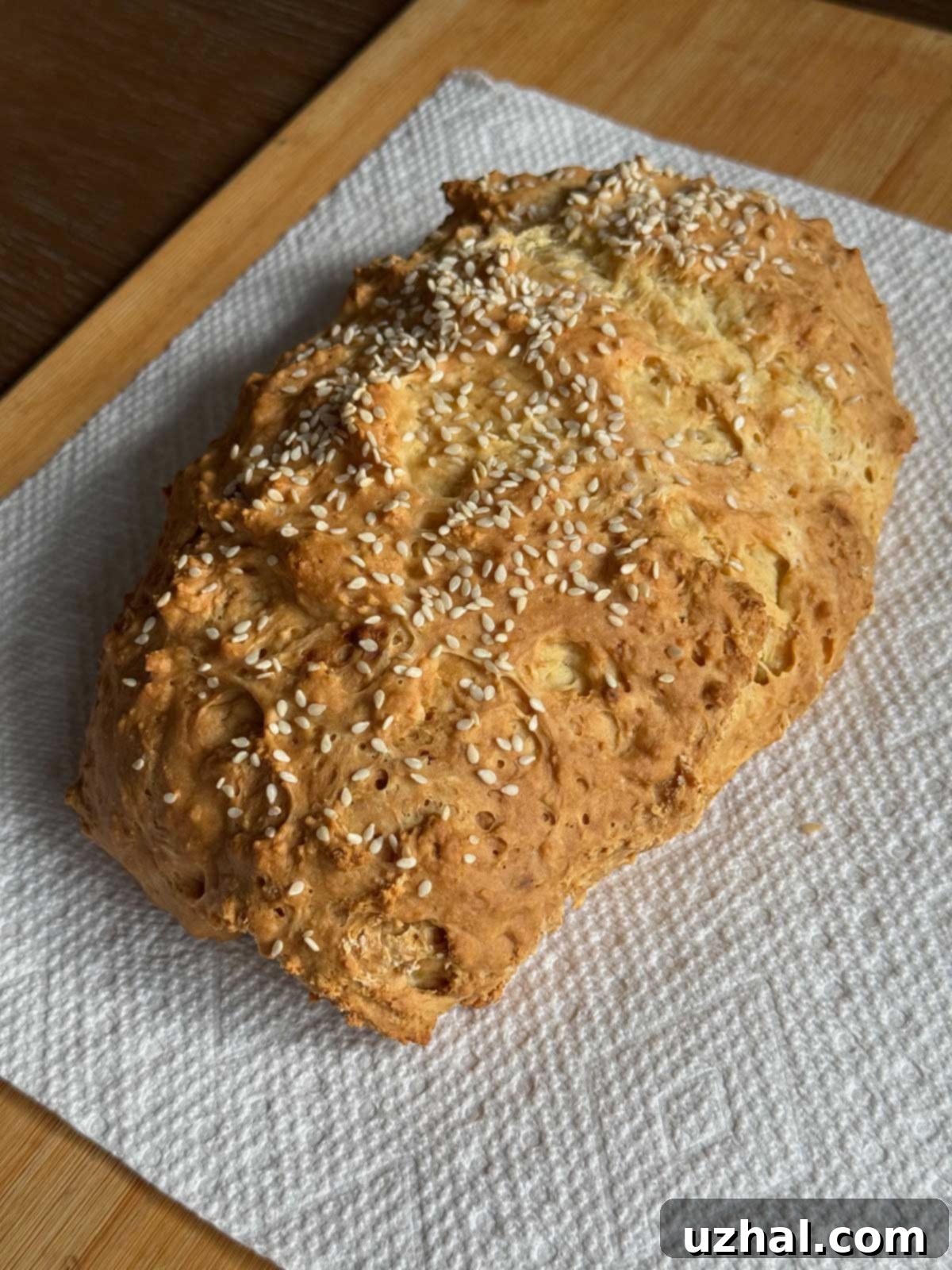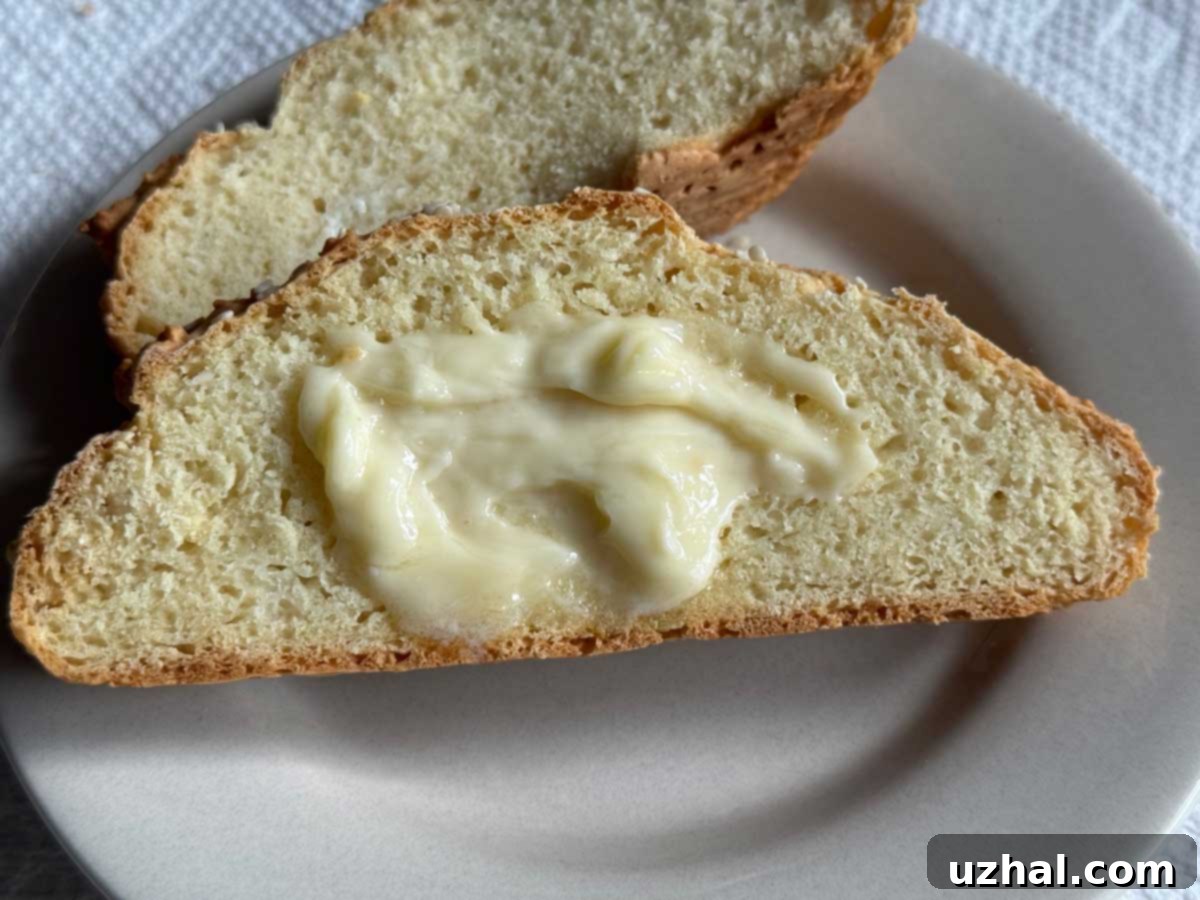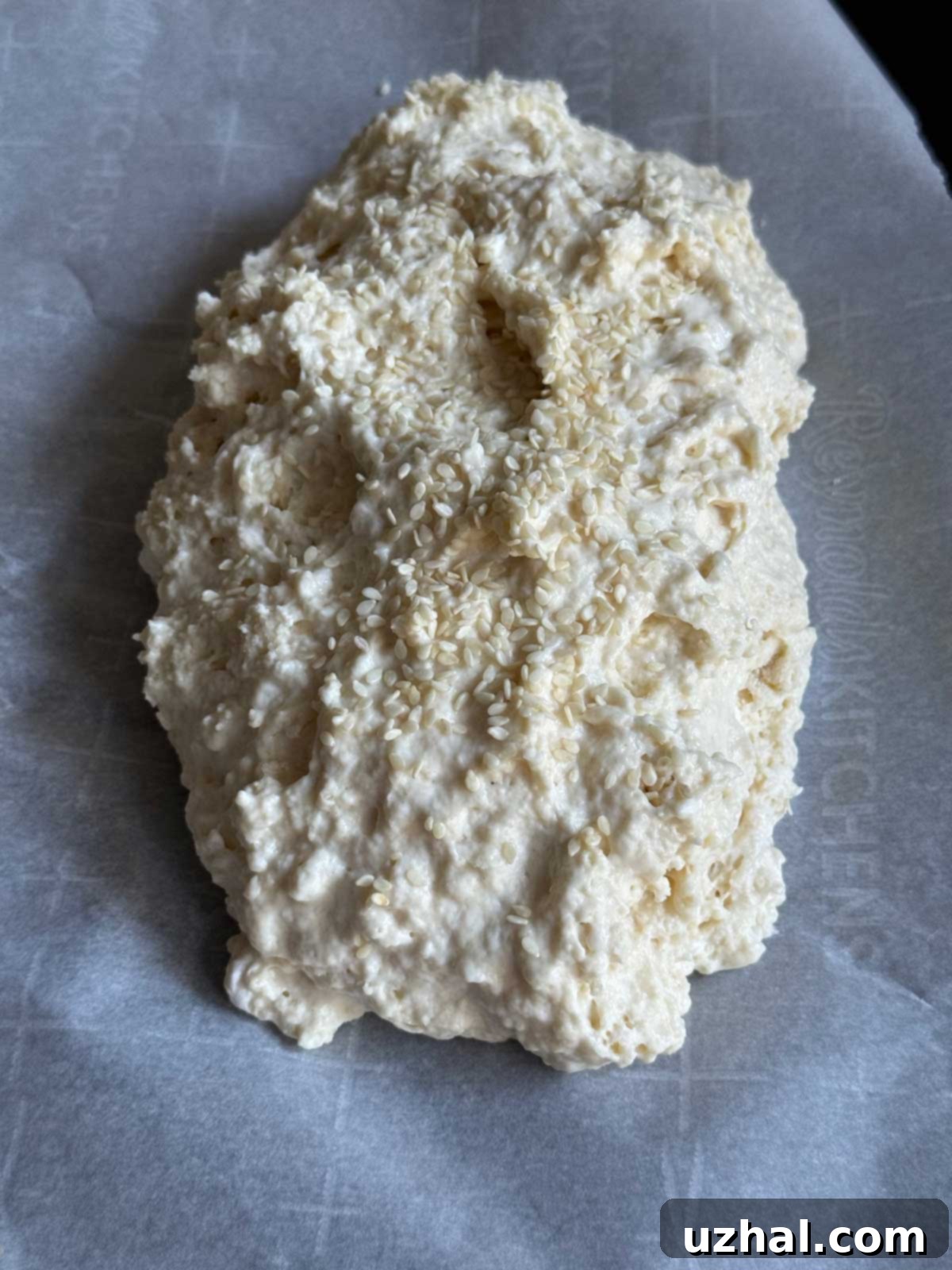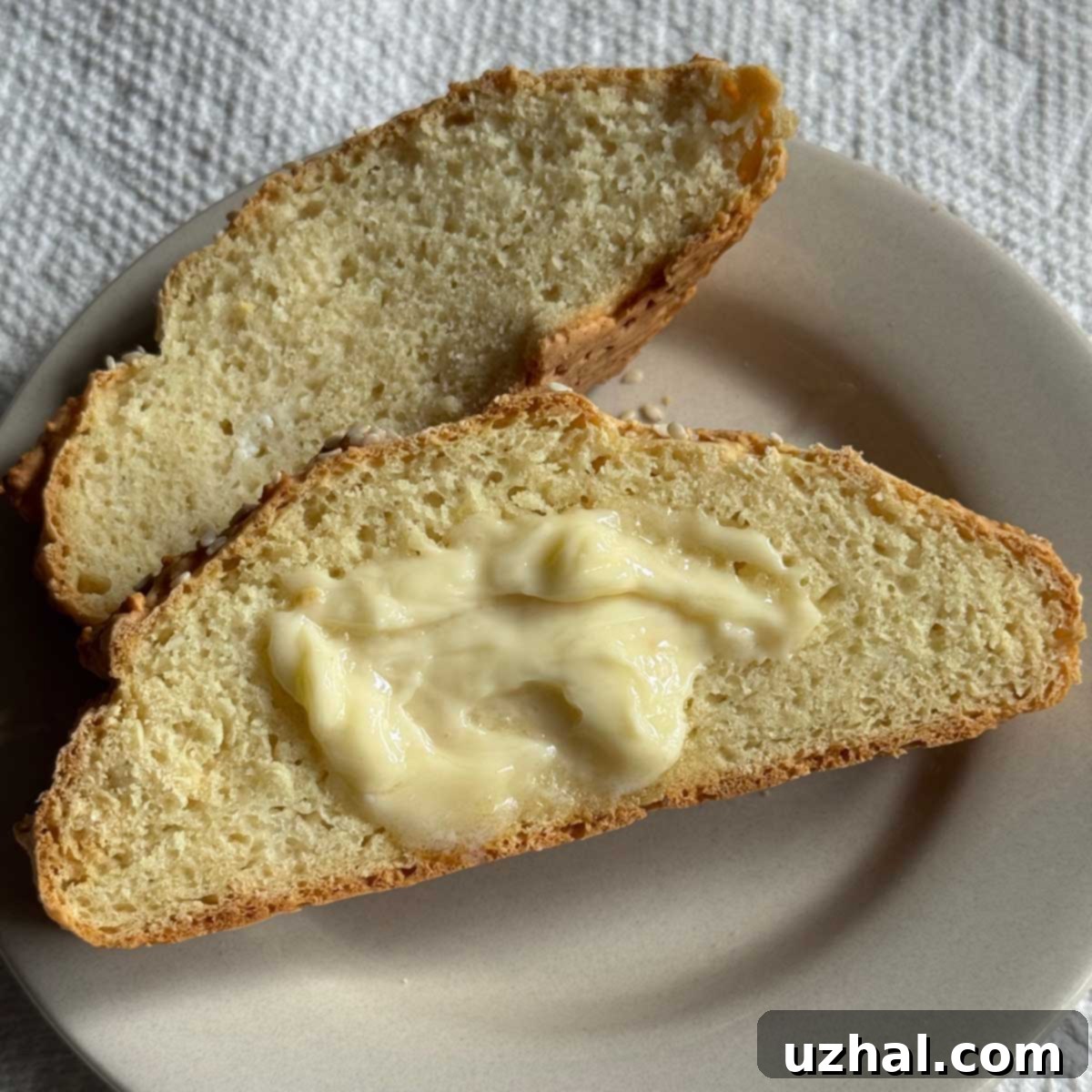Effortless No-Yeast Buttermilk Sour Cream Bread: Your Quick & Flavorful Homemade Loaf
Imagine the warm, comforting aroma of freshly baked bread filling your home, but without the usual fuss of yeast activation, lengthy proofing, or endless waiting. This isn’t a dream; it’s a reality with our incredibly easy No-Yeast Buttermilk Sour Cream Bread recipe. Perfect for those moments when a bread craving strikes but time is short, this delightful loaf promises a tender crumb, a satisfyingly chewy crust, and a depth of flavor that comes alive with the creamy tang of buttermilk and sour cream.

Many home bakers hesitate to dive into bread making, often intimidated by the perceived complexities of working with yeast. From ensuring the yeast is active to patiently waiting for dough to rise – sometimes multiple times – it can feel like a significant commitment. This is precisely why quick bread recipes, like this one, are culinary gems. They offer the unparalleled satisfaction of homemade bread with a fraction of the effort, making them an indispensable addition to any kitchen. This particular recipe has quickly become a permanent fixture in my repertoire, proving itself a true lifesaver for last-minute meals, whether you’re serving a hearty soup or a crisp, fresh salad.

Understanding the Unique Texture and Rich Flavor Profile
One of the standout qualities of this no-yeast bread is its exquisite texture. Unlike dense, traditional biscuits or the airy crumb of a classic yeast loaf, this bread boasts a remarkably tender and soft interior. This tender crumb is largely due to the leavening power of baking soda and baking powder reacting with the acidity of the buttermilk and sour cream, creating a delicate, moist structure. While its tenderness means it’s not the ideal candidate for soaking up copious amounts of olive oil like a crusty Italian baguette, it truly shines when paired with butter.
The flavor is equally captivating. Buttermilk imparts a subtle, tangy complexity that elevates the bread beyond a simple accompaniment, while sour cream adds an unparalleled richness and moisture. Together, they create a savory, slightly bright profile that is incredibly satisfying. This bread serves as an exceptional canvas for various toppings, particularly compound butters. Imagine a vibrant herb butter with parsley and chives, a zesty lemon-dill butter, or even a sweet honey-cinnamon butter for a breakfast treat. The possibilities are endless, allowing you to customize the experience to perfectly complement any meal. It’s fantastic alongside a robust lentil soup, a creamy tomato bisque, a fresh green salad, or even as a simple yet elegant side for a weeknight roasted chicken.
Unbelievably Simple Steps for Perfect Baking
The beauty of this recipe lies in its sheer simplicity, making it incredibly approachable for bakers of all skill levels, especially beginners. You won’t find complicated techniques or demanding schedules here. The entire process boils down to just three core steps: 1. Whisk your dry ingredients, 2. Add your wet ingredients and mix, and 3. Shape and bake. That’s truly all there is to it! Forget about extensive kneading, multiple proofing stages, or the need for a stand mixer. A simple bowl and a spoon are your best friends in this kitchen adventure.
To start, ensure your dry ingredients—flour, baking powder, baking soda, salt, and sugar—are thoroughly combined in a large bowl. This initial step is crucial for even distribution of the leavening agents. Next, gently fold in the buttermilk and sour cream until just combined. Overmixing can lead to a tougher bread, so aim for a barely combined mixture. Once your dough is ready, scrape it onto a parchment-lined baking sheet. Parchment paper is essential here to prevent sticking and make cleanup a breeze. You can shape the dough into a rustic oval or a neat round; either way will yield a beautiful loaf. For an extra touch of flavor and visual appeal, sprinkle the top generously with seeds. Sesame seeds add a delightful nuttiness and crunch, but don’t limit yourself! Nigella seeds offer an exotic peppery note, while Everything Bagel seasoning provides a savory, aromatic burst that’s simply irresistible. Coarse sea salt or dried herbs like rosemary can also make fantastic additions.
For baking, a preheated oven is key. While a pizza stone can enhance the crust’s crispness if you place the parchment paper directly on it, it’s by no means a requirement. A standard baking sheet works perfectly well. The initial blast of high heat at 400°F helps the bread rise quickly, creating that tender crumb, before you reduce the temperature to 350°F to ensure it bakes through evenly and develops a beautiful golden-brown crust. This two-stage baking process is a simple trick that yields impressive results, ensuring your loaf is perfectly cooked from edge to center.

Customizing Your Loaf: Creative Variations
One of the joys of simple recipes is their adaptability. This No-Yeast Buttermilk Sour Cream Bread is incredibly versatile, allowing you to easily adjust it to your taste preferences or the ingredients you have on hand. Here are some fantastic ways to customize your next loaf:
- Adjusting Sweetness: The original recipe calls for a tablespoon of sugar, providing just a hint of sweetness that rounds out the flavors. If you prefer a purely savory bread, feel free to reduce the sugar to 1 ½ teaspoons. However, I find the subtle sweetness enhances the overall taste profile and contributes to the lovely golden crust.
- Savory Additions: Transform this into a savory delight by folding in about ½ cup of shredded cheese into the batter. A sharp cheddar, a spicy pepper jack, or even a tangy Gruyère would work wonderfully. Beyond cheese, consider adding finely chopped fresh herbs like rosemary or thyme, a teaspoon of garlic powder, or a handful of sun-dried tomatoes (well-drained and chopped) for an extra burst of flavor.
- Dairy Substitutions: If sour cream isn’t available, a full-fat plain yogurt makes an excellent substitute. Ensure it’s not too watery; Greek yogurt or a thicker European-style yogurt would be ideal. The acidity of yogurt will interact similarly with the leavening agents, ensuring a proper rise.
- Homemade Buttermilk: No buttermilk on hand? No problem! You can easily make your own. Simply add 1 tablespoon of lemon juice or white vinegar to a liquid measuring cup, then fill the rest of the cup with regular milk (any fat percentage) until it reaches the 1-cup mark. Let it sit for 5-10 minutes until it slightly curdles. While this “soured milk” works perfectly for the recipe’s chemistry, authentic buttermilk often offers a deeper, more complex flavor. Both methods yield delicious results, so use what’s convenient!
- Flour Variations: While all-purpose flour provides the best texture for this recipe, you can experiment by substituting up to ¼ of the all-purpose flour with whole wheat flour for a nuttier flavor and added fiber.
Don’t be afraid to experiment with these variations to find your perfect loaf. This bread is forgiving and designed for customization!
- Sour Cream Chocolate Cookies
- Sour Cream Banana Bread
- High Rising Sour Cream Muffins
- Banana Sour Cream Cake
- Sour Cream Chocolate Layer Cake
Recipe

Simple No-Yeast Bread
Anna
Pin Recipe
7 minutes
35 minutes
5 minutes
55 minutes
Bread
American
8
Ingredients
-
2
cups
all-purpose flour
(260 grams) -
2
teaspoons
baking powder -
½
teaspoon
baking soda -
¾
teaspoon
salt -
1
tablespoon
sugar -
1
cup
buttermilk (not too cold, not too warm) -
⅓
cup
sour cream -
2
tablespoons
sesame seeds or any choice of seeds or toppings
Instructions
-
Preheat your oven to 400°F (200°C). Prepare a baking sheet by lining it with parchment paper for easy release and cleanup.
-
In a large mixing bowl, thoroughly whisk together the all-purpose flour, baking powder, baking soda, salt, and sugar. Ensure there are no lumps and all dry ingredients are evenly distributed.
-
Pour in the buttermilk (ideally at room temperature, not too cold) and add the sour cream to the dry mixture. Stir gently with a spoon or spatula until just combined. Be careful not to overmix; a few lumps are fine.
-
Scrape the dough onto the prepared parchment-lined baking sheet. Using wet hands or a spatula, gently shape the dough into a rustic oval or round loaf, about 1-1.5 inches thick. Sprinkle the top evenly with your chosen seeds, such as sesame seeds, nigella seeds, or Everything Bagel seasoning.
-
Place the bread in the preheated oven. Bake at 400°F (200°C) for the initial 10 minutes. After 10 minutes, reduce the oven temperature to 350°F (175°C) and continue baking for another 25-30 minutes, or until the loaf is beautifully golden brown on top and a wooden skewer inserted into the center comes out clean.
No Yeast, Quick Bread, Sour Cream
Tried this recipe?
Let us know how it was!
Storage and Serving Suggestions
Once baked, allow your loaf to cool for at least 5-10 minutes on a wire rack before slicing. This helps the crumb set and prevents it from becoming gummy. This bread is best enjoyed fresh, ideally on the day it’s baked, when its crust is perfectly chewy and the crumb is at its most tender. Store any leftovers at room temperature in an airtight container or wrapped tightly in foil for up to 2-3 days. While it won’t retain the same crisp crust, it remains delicious. For longer storage, you can freeze individual slices or the entire loaf (well-wrapped) for up to 1-2 months. Thaw at room temperature and refresh in a warm oven or toaster for a few minutes to bring back some of its delightful texture.
This versatile bread can accompany almost any meal. Serve it alongside your favorite stews, chilis, or roasted meats. It also makes a fantastic addition to a breakfast spread, toasted and topped with cream cheese or jam. Consider making mini loaves or rolls for individual servings, perfect for a dinner party or a casual brunch. Its robust yet delicate flavor profile makes it a stellar partner for both hearty and light dishes, ensuring it’ll become a much-loved staple in your household.
Why Choose No-Yeast Bread?
For many, the appeal of no-yeast bread is undeniable. The primary advantage is speed. Traditional yeast breads require time for the yeast to ferment and the dough to rise, a process that can take hours. With quick breads like this buttermilk sour cream loaf, baking powder and baking soda act as immediate leavening agents, meaning you can go from mixing bowl to warm, fresh bread in under an hour. This makes it ideal for busy weeknights, spontaneous gatherings, or when you simply don’t have the patience for a long bake.
Furthermore, working with yeast can sometimes be tricky. Factors like water temperature, yeast freshness, and ambient room temperature can all affect the rise. No-yeast recipes eliminate these variables, offering a consistent and reliable result every time. The use of acidic dairy products like buttermilk and sour cream not only provides the necessary acidity to activate the baking soda but also contributes significantly to the bread’s moistness and rich flavor, distinguishing it from dryer, less flavorful quick bread varieties. This recipe is a testament to how simple ingredients can come together to create something truly extraordinary with minimal effort.
